The Latest
|
Escaping the Clutches of Zombie Projects[magazine] Timely and accurate information is often your only silver bullet against interminable and doomed projects. Learn how to deliver bad news in such a way that Senior Management hears it and acts promptly. |
||
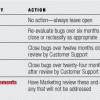 |
Organize Your Problem Tracking System[magazine] Do you have a bug database or defect tracking system? Whether you call them PRs, CRs, SPRs, or some other acronym, logging your software problems into a database rates as one of the simplest yet most effective things you can do to improve product quality. Sometimes these databases turn into the electronic equivalent of a “roach motel” trap--the bugs go in but they don’t come out! |
Barry Mirrer
June 26, 2002 |
|
Looking Under the Hood[magazine] Understanding a program's inner workings, dataflows, and bug history can enable you to build more robust tests. Here are pointers on investigating a system's internal design as a tool for effective testing. |
Len DiMaggio
June 26, 2002 |
|
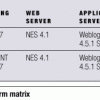 |
Juggling Concurrent Releases[magazine] Every day you are faced with juggling resources and attention between customer escalations, current development projects, and planning for the future. With development cycles measured in weeks, you have at least three releases for each product. Multiply that by the number of projects under your responsibility, and you have a dozen or more releases to manage simultaneously. |
Neal Reizer
June 26, 2002 |
|
|
Getting the Most from Outsourcing[magazine] Outsourcing can be a great way to augment your software efforts. Here are guidelines to help you choose the right provider and ensure that you get what you paid for. |
Eric Patel
June 26, 2002 |
|
Matching ISO 9000 Registration to Your Organization[magazine] The chances of getting use from your ISO 9000 certification are greatly enhanced by a registration effort that reflects the real goals and operating principles of your organization. Here are some lessons on how to tailor your effort. |
Mark Johnson
June 26, 2002 |
|
|
The Quality Barometer[magazine] A QA manager is often faced with measuring the impossible. Here is a simple, post-ship metric to help judge the test effort's effectiveness. The Quality Barometer method uses the bug counts found during testing, calculates a percentage, and then uses that percentage as the defect target number that can be tolerated after shipment. |
George Hamblen
June 26, 2002 |
|
|
Your Piece of the Pie[magazine] More than 1,800 industry professionals responded to the third annual STQE/StickyMinds salary poll. The results suggest that, although it has been an unsettling year, the picture doesn't look all that bad for software QA professionals. |
Alyn Wambeke
June 26, 2002 |
|
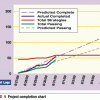 |
Perspectives from a Test Manager: Four Keys to Keeping Your Testing on Track[magazine] This article highlights four keys to getting better organized: 1. A common set of ground rules on the test progress, defect reporting, and verification; 2. The ability to convey how your team’s testing is going--on a frequent basis; 3. Knowing what needs to be tested--and being able to stand behind the reasons why; 4. Maintaining good communication with the development leaders to help move the product through the development phases--being proactive rather than reactive. |
|
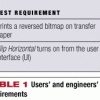 |
Step-By-Step Test Design[magazine] Testers are often faced with short development cycles and partial product specifications. This simple, six-step design method helps you come up with a reasonably thorough set of tests for individual product features in a reasonable amount of time. It employs list and table and encourages you to look at the software from a variety of perspectives. |
|
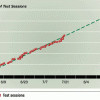 |
Session-Based Test Management: A Strategy for Structuring Exploratory Testing[magazine] Unlike traditional scripted testing, exploratory testing is an ad hoc process. Everything we do is optimized to find bugs fast, so we continually adjust our plans to refocus on the most promising risk areas; we follow hunches; we minimize the time spent on documentation. That leaves us with some problems. For one thing, keeping track of each tester’s progress can be like herding snakes into a burlap bag. Every day I need to know what we tested, what we found, and what our priorities are for further testing. |
|
|
The Ritual of Retrospectives: How to Maximize Group Learning by Understanding Past Projects[magazine] You've just finished your software release. You have signed off, and it's been shipped. You’re done, right? No! The moment a project ends is the perfect time to reflect on the entire project to see what there is to learn—it's the unique moment when the project can be seen in its entirety. It’s also a perfect moment because the end of your project forecasts the beginning of a new project in the not-too-distant future, which you can improve by applying what you’ve learned from this project. You can look at completing the project as having “paid your tuition.” So now what are you going to learn from it? |
Norm Kerth
June 26, 2002 |
|
|
Risky Beginnings: How to Start Software Projects Off on the Right Foot[magazine] Esther Derby's opening comments set up the thrust of her enlightening article: "Have you ever managed a project that went directly, hopelessly, and irretrievably to hell? Would you like to avoid some of the traps so your project doesn’t end up there?" |
||
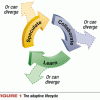 |
Retiring Lifecycle Dinosaurs: Adaptive Software Development[magazine] Adaptive Software Development (ASD) is one of a growing number of alternatives to traditional, process-centric software management methods. Extreme Programming (XP), Lean Development, SCRUM, and Crystal Light methods—although different in many respects—are tied together by a focus on people, results, minimal methods, and maximum collaboration. They are geared to the high speed and high change of today's e-business projects. |
Jim Highsmith
June 26, 2002 |
|
Risk-Based Testing: How to Conduct Heuristic Risk Analysis[magazine] Software testing is often motivated by risk. If you accept this premise, you might well wonder how the term "risk-based testing" is not merely redundant. However, conducting a heuristic risk analysis by employing a checklist of open-ended questions, suggestions, or guidewords is a proven approach to help you find the most important risks for developing your testing plans. |





